
The best online fitness resource you'll ever need. We filter out the BS to ensure you meet your health and fitness goals!

The best online fitness resource you'll ever need. We filter out the BS to ensure you meet your health and fitness goals!
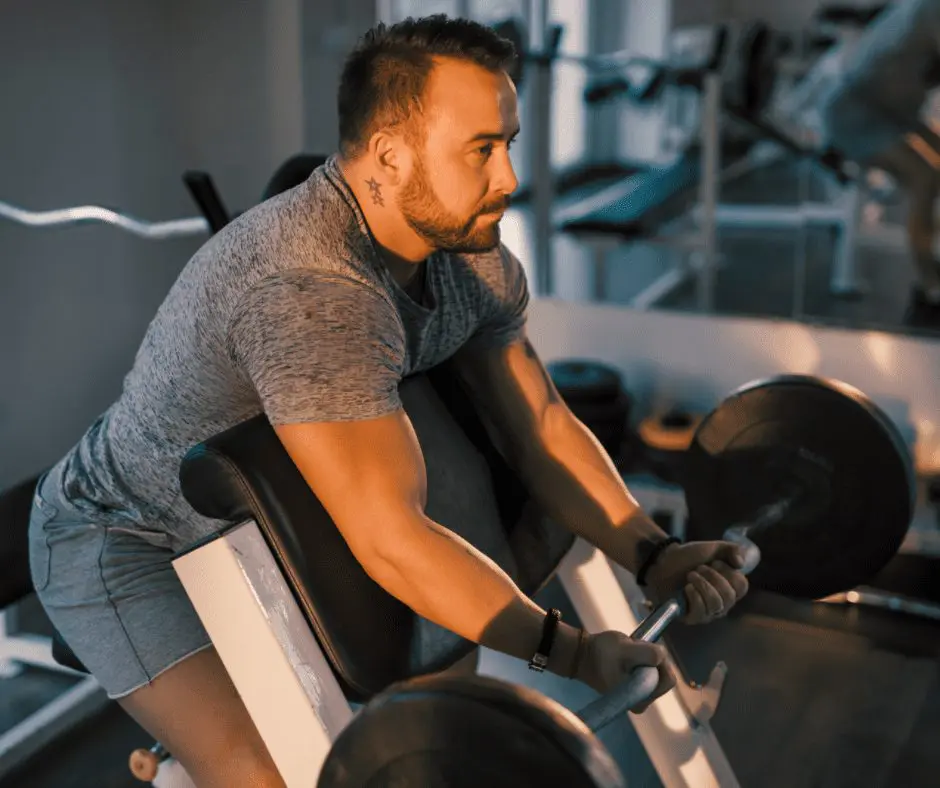
All curls work the biceps. The difference is how effectively and how safely.
Curl variations abound. Grips, forearm angle, equipment, range of motion, with and without momentum.
Preacher curls are thought by some to be the best biceps exercise. After all, the first Mr. Olympia, Larry Scott, was known for his magnificent biceps and the preacher curl was his jam.
The questions for us are “are preacher curls the best exercise for biceps”, “what are preacher curl alternatives”, and if so, “which preacher curl alternatives are better, or best”?
Let’s start at the beginning. What exactly is a preacher curl?
The preacher curl is a barbell, dumbbell, or machine curl performed using a bench or arm board to support the upper arms. The board can be oriented at any angle between almost horizontal to vertical, straight up and down (90°), and any angle in between. The most familiar is the 45° preacher curl bench.
The lifter rests the backs of their arms against the board throughout the exercise and supports their chest on the opposite side. Most free-weight preacher curl benches allow the lifter to lean against the vertical side and curl on the angled side, or switch so that they curl on the vertical side and rest against the angled side.
The preacher has some strengths, pardon the pun.
The big advantage of preacher curls is isolation. They allow the lifter to easily isolate the biceps by keeping the upper arm still. Momentum can still be used but it’s less likely and actually a little difficult.
Then there’s versatility. Preacher curls can be done using a variety of equipment and grips, like other curl variations.
But does that make preacher curls best, or are preacher curl alternatives better?
No. They are not.
Whoa! Say what, bruh? All the jacked guys on Insta with monster arms do preacher curls!
If there’s a single point I’d like to convey in this article, it’s this. Very, very few lifters do a single exercise for a body part. Very few. They’re as rare as snow leopards. There’s no way a single exercise can be credited for an exceptionally well-developed body part when six or seven exercises are performed for that body part.
This is not to say that preacher curls are ineffective. They do “work” the biceps. They make the biceps pull from their points of origin to their points of insertion.
Preacher curls fall short in two key dimensions:
Depending on the type of resistance, location of the resistance relative to gravity, and how the body is oriented against resistance, the load curve of a lift changes.
Free weight preacher curls are loaded greatest at the bottom of the motion, and almost not at all at the top. This is because gravity is pressing straight down, and the forearm (which is the lever in this case), is oriented against that.
That changes as the weight travels up. The biceps works less and less as the weight transfers until it’s straight down through the forearm. Try this yourself. You can sit for a very long time on an angled free-weight preacher bench with the weight in the up position.
Once the weight passes through the top of the curl, the weight then falls backward toward the lifter. The biceps are relaxed and not at all under tension. Unless a rest phase is desired for each and every rep, this obviously becomes counter-productive unless your strategy is intra-set recovery.
Stopping the curl short of 90° maintains load on the biceps, but you’re essentially doing partial reps for entire sets. Cable machine preacher curl alternatives solve this, as you’ll see in a bit.
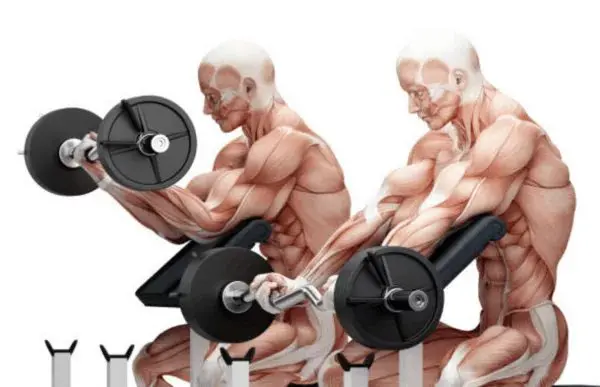
Perhaps the most significant downside to the traditional free-weight preacher curl is the risk of injury.
If an exercise could be invented that would put the biceps at risk of permanent injury, it would be a bent arm deadlift. Right behind it would be the preacher curl.
Biomechanically, they are the same.
The biceps is under the greatest load when the tendon is completely stretched. The preacher curl backboard forces the arm to straighten to complete extension. Compare this to, say, a standing barbell curl where there’s some flexion at the beginning of the curl. The tendon is not completely stretched.
Also, with conventional free-weight curls, the upper arm moves ever-so-slightly backward, giving the biceps tendon a little mechanical advantage. Too much of this of course defeats the purpose, and we’ve all seen lifters with slopping form with elbows so far back that the biceps does very little work at all.
Free weight preacher curls put the biceps at risk because the arm is overloaded too much at the beginning of the movement.
Take a light dumbbell in one arm and sit at a preacher curl bench with your elbow positioned right at the top of the pad. Hold your arm straight out and feel the downward pull at your elbow. Now, take the same weight and stand with the dumbbell at your side. Almost no resistance at all.
That is an extreme example of what happens during a free-weight preacher curl. Although the arm isn’t straight out holding the weight at 90° to gravity, you can appreciate that the load is greatly magnified.
Complete tears of the biceps almost always require surgery and are disfiguring to some degree. The arm never looks quite the same no matter what exercise routine you follow afterward. Even partial muscle tears leave divots in the muscle that are evident when flexing.
If you’re unconvinced, watch the video below showing preacher curl-induced biceps tears. Caution: do not watch on a full stomach.
There are alternatives to the traditional free-weight preacher curl. Because the biceps’ job in life is to move the forearm toward the body, almost any curl is effectively a preacher curl alternative. As we’ve said, the preacher curl is just another way to do that.
The preacher curl is somewhat unique in that it enforces keeping the upper arm “quiet” during the motion. When we think of the preacher curl, a preacher curl alternative is a biceps exercise that requires bending only at the elbow with the upper arm still or somehow restricted.
Using that criterion, we’ve listed our Top 10 preacher curl alternatives. Here they are.
We’re talking preacher curl alternatives, right? Isn’t the 90° preacher curl, well, a preacher curl?
Yes. And no.
There are two reasons why not.
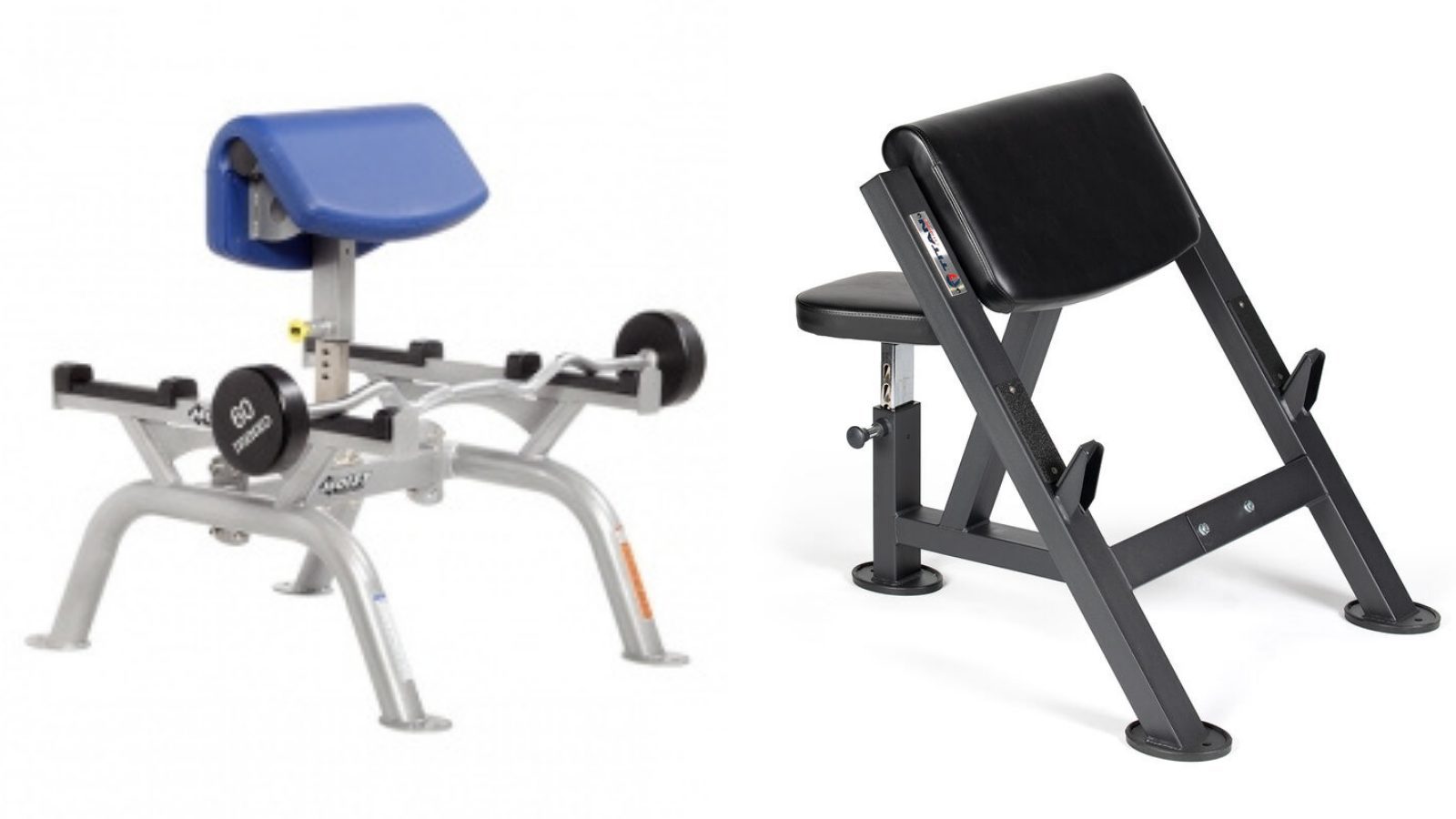
We’re calling this one of our preacher curl alternatives because it is so seldom used.
And it’s at the 90° Preacher of our preacher curl alternatives list because it is (a) still a preacher curl, yet (b) isolates the biceps without the same level of risk as its angled cousin. Few choose it over the angled version because it’s difficult to use as much weight and, for people whose primary motivation is going beast mode, it’s not as satisfying.
There are no special instructions on how to do a 90° preacher curl, other than to face the other way with the chest on the angled pad. The backs of the arms should be flush with the vertical pad.
Spider curls are terrific preacher curl alternatives. Although there is no arm board to support the upper arms, gravity helps to keep the arms still, making momentum virtually impossible.
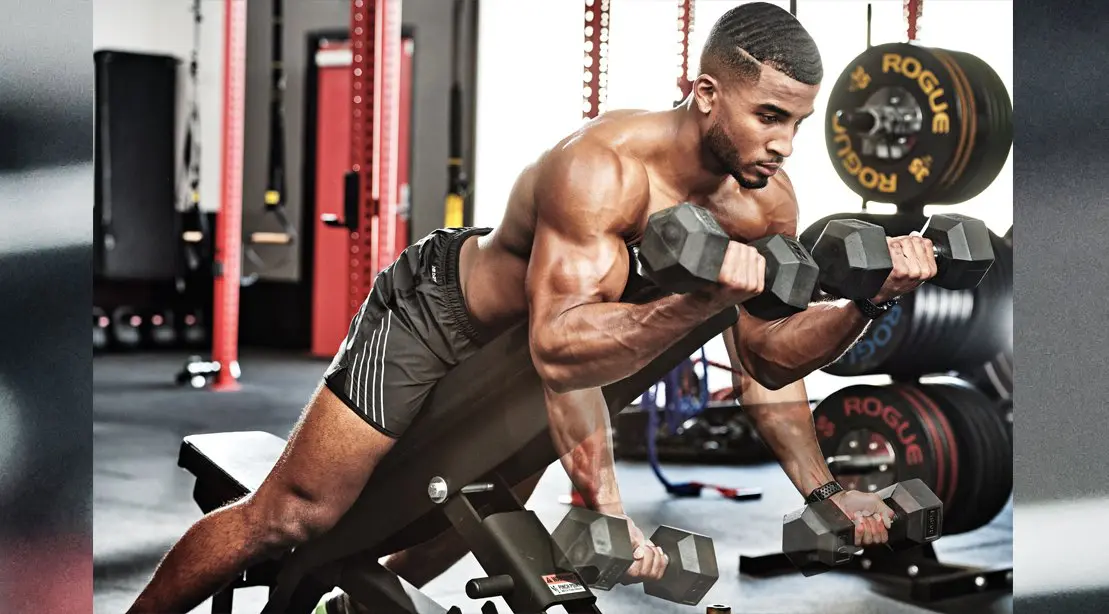
Spider curls isolate the biceps and do not put the tendons at undue risk of injury. They can be performed with dumbbells, straight, or EZ Curl barbells.
Cable preacher curls are one of the safer preacher curl alternatives, simply because the biceps tendon isn’t losing the amount of mechanical advantage that it does in the free weight version.
The arm is still fully extended. However, the weight is pulling from a more forward position instead of straight down against a stretched biceps tendon.
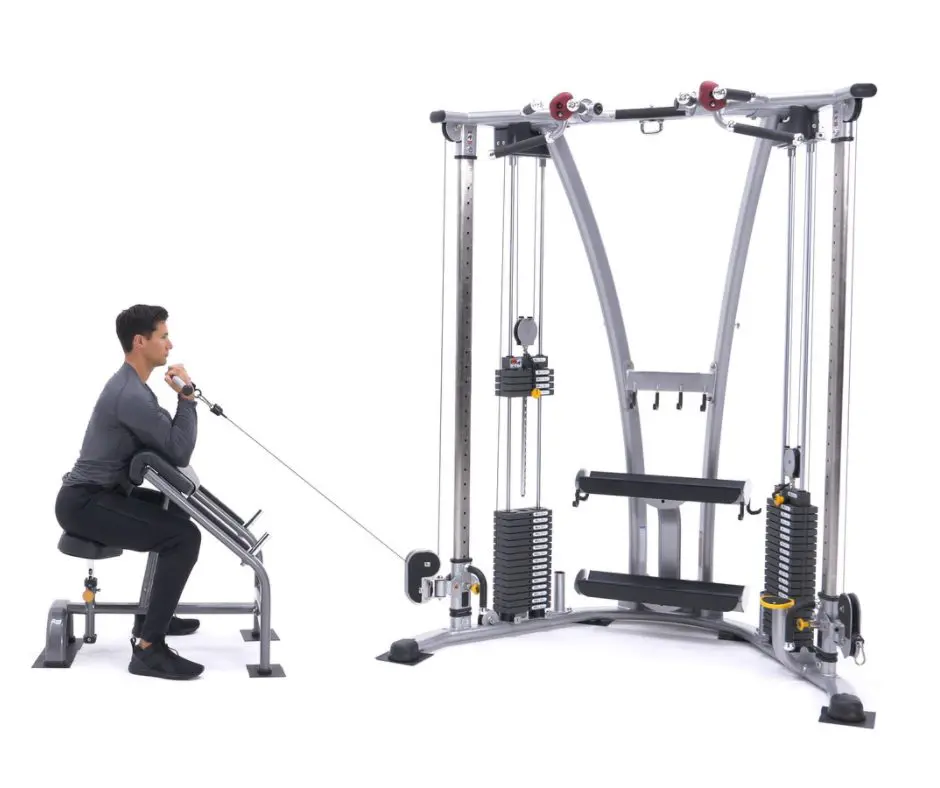
The standing cable curl isn’t just one of our preacher curl alternatives; it’s maybe one of the best curl alternatives, period.
The standing cable curl is so versatile and can be performed in so many ways depending on the lifter’s goal, we’re wondering if maybe it should be higher up our list.
The standing cable curl can be done single-sided or using both arms. It can be done with a single handle, two individual handles, or a bar attachment. You can face the pulley machine or turn away from it. Versatile.
The standing cable curl is very forgiving due to its versatility and is easy to perform well. For that reason, it’s #4 on our list of preacher curl alternatives.
This preacher curl alternative adds the challenge of keeping yourself steady in a kneeling position, so it’s not exactly an isolation exercise and frankly, it can look a little dumb. Still, the biomechanics of the exercise for the biceps are favorable when compared to the free weight preacher curl.
The dumbbell concentration is one of our preacher curl alternatives because it involves the use of a natural backstop, the inner thigh.
It is not as good as some of the other preacher curl alternatives because it does not freely allow as much range of motion as some of the others. The tendency is for the lifter to stop the curl just shy of the full range to avoid contacting the chest.
The Arm Blaster gained popularity in the 1970s and became an iconic piece of equipment once photos of Arnold using one to manufacture his legendary guns were circulated.
The Arm Blaster is a preacher curl alternative and very much like the preacher curl itself because the upper arms are pinioned against a hard surface and mostly prevented from adding momentum.
The lifter can still cheat by rocking backward to help lift the weight, so it’s not a foolproof way to isolate the bis.
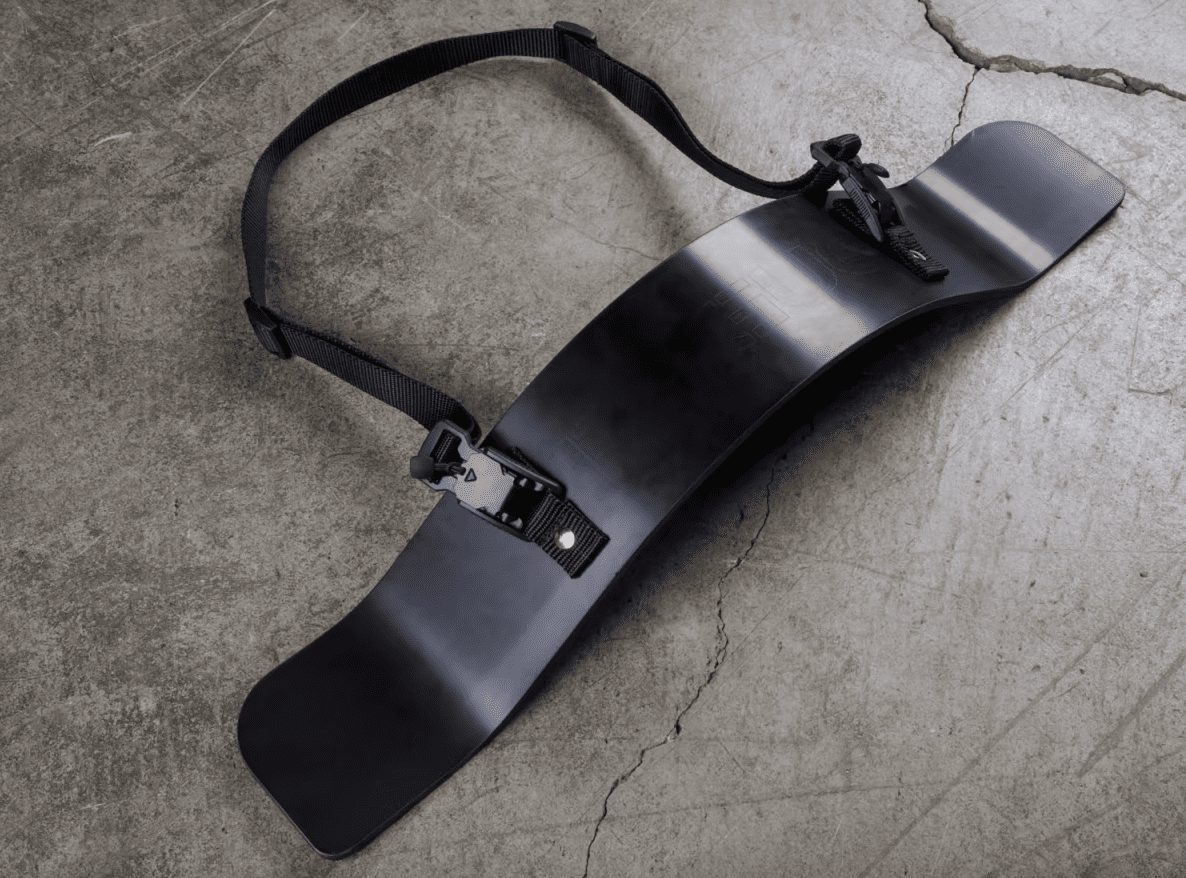
1) Palms-up Dumbbell Curls
We don’t often think of traditional curls as being preacher curl alternatives, but they are.
In a Palms-up Dumbbell Curl, the hand stays supine throughout, facing the ceiling. This exercise doesn’t begin as a hammer and end palms-up.
This is a legitimate preacher curl alternative because the palms stay in this upward-facing attitude throughout the motion, and engage the brachialis strongly. The brachialis lies underneath the biceps and helps add height to the peak.
Yes, barbell curls are indeed preacher curl alternatives, if done strictly. Barbell cheat curls would not meet the criteria for a preacher curl alternative. You can use an EZ Curl bar for this.
Many can simply not resist the urge to use more weight than they can curl strictly, so we’ve chunked this preacher curl alternative near the bottom of our list.
Of all the preacher curl alternatives, this one may be the most interesting. It reduces the ability to add momentum and loads the biceps in isolation, and it’s difficult to perform one using enough weight that could do any harm, although that’s always possible.
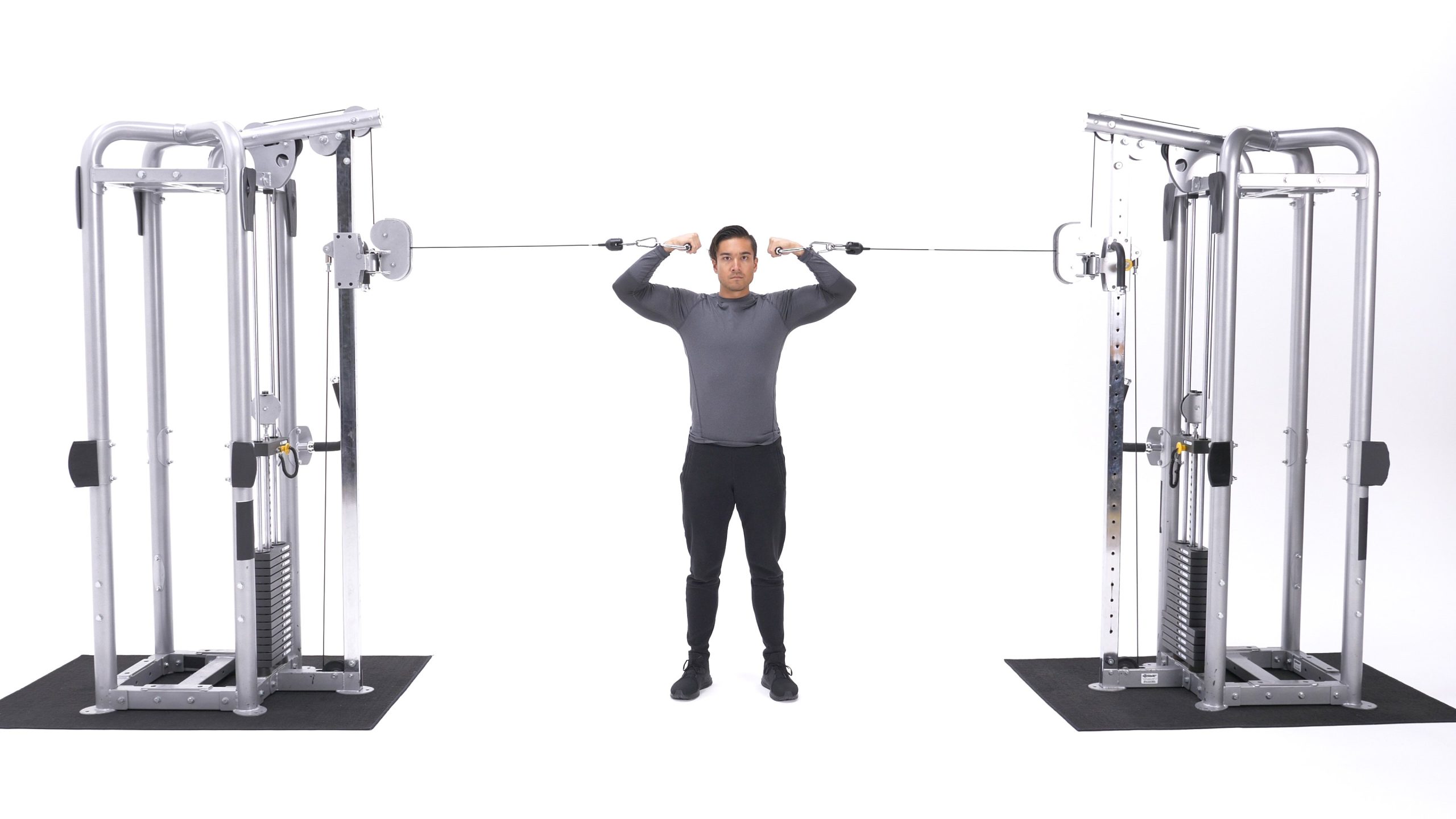
These can be done one arm at a time, or both arms together or alternating (one side pulling, then the other).
You can use a machine with pulleys on either wide or a single pulley (just means you can only do one side at a time).
Like the barbell curl, most lifters simply cannot master strict form or resist the urge to involve another body part. In the case of this preacher curl alternative, it’s the urge to shrug the working shoulder inward that moves this nifty exercise to the bottom of our list.
Preacher curl machines are traditional free-weight preacher curl alternatives, but they’re still preacher curls, with the same benefits and most of the downsides.
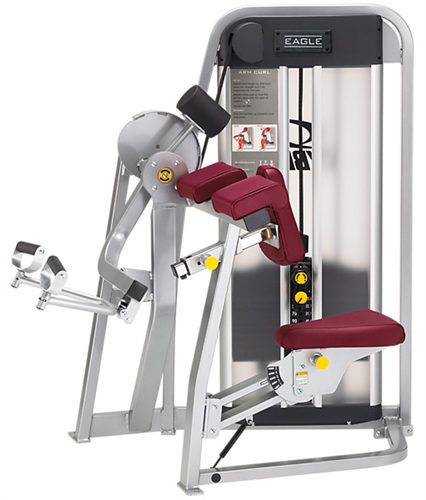
Depending on the brand, the design of preacher curl machines can relieve some of the danger of injury that traditional preacher curls impose. Between the orientation of their handles and their cam designs, the tug of resistance is more “outward”, away from the lifter, than downward…if this makes any sense. You just need to try one to see what we’re saying here.
The feel is more akin to the cable preacher curl.
There’s no special guide for how to do a machine preacher curl. They’re self-explanatory and often include “how-to” graphics right on the machine itself.
You do need to be conscious that the weight you select on the stack may or may not be the actual resistance. The cams and pulleys can reduce or magnify the load. Start light and work up.
Care is still required to monitor the strain on the biceps. Resist the temptation to go too heavy or to rep to volitional failure when your biceps become over-fatigued.
As the biceps fatigue during a set, the risk of tendon injury rises. It’s worthwhile to remind everyone to be warmed up prior to loading the biceps.
We can’t do justice to the preacher curl and all the preacher curl alternatives without mention of the great Larry Scott. In fact, the Preacher Curl is nicknamed Scott Curl in Larry Scott’s honor.
Scott had legendary softball biceps that extended all the way to his elbow. The Scott Curl got the credit, but Larry would’ve had Larry-biceps no matter what.
Below you can see photos of Scott doing the angled preacher curl that most lifters perform, but also the vertical variant, which is much like the Spider Curl we outlined above.
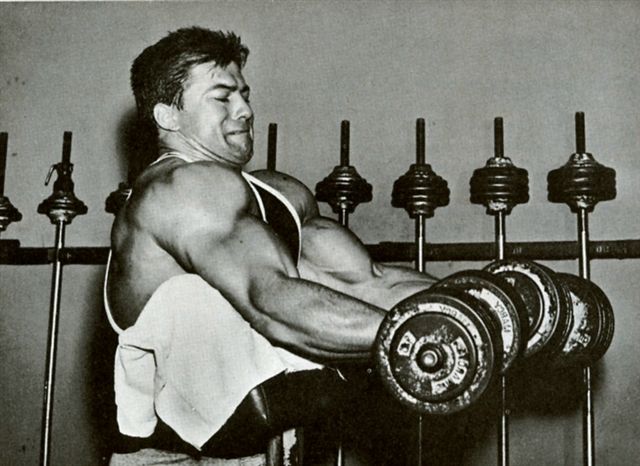

Because he was frequently seen doing preacher curls, the exercise itself was attributed to his arms when it was really his genetics.
Scott also did other exercises for his biceps, so it’s impossible to say for sure exactly how much that single exercise contributed to his impressive arms. Understanding the physiologic role of the biceps and their biomechanics will help you evaluate which exercises are good, better, or best to grow your own set of guns.
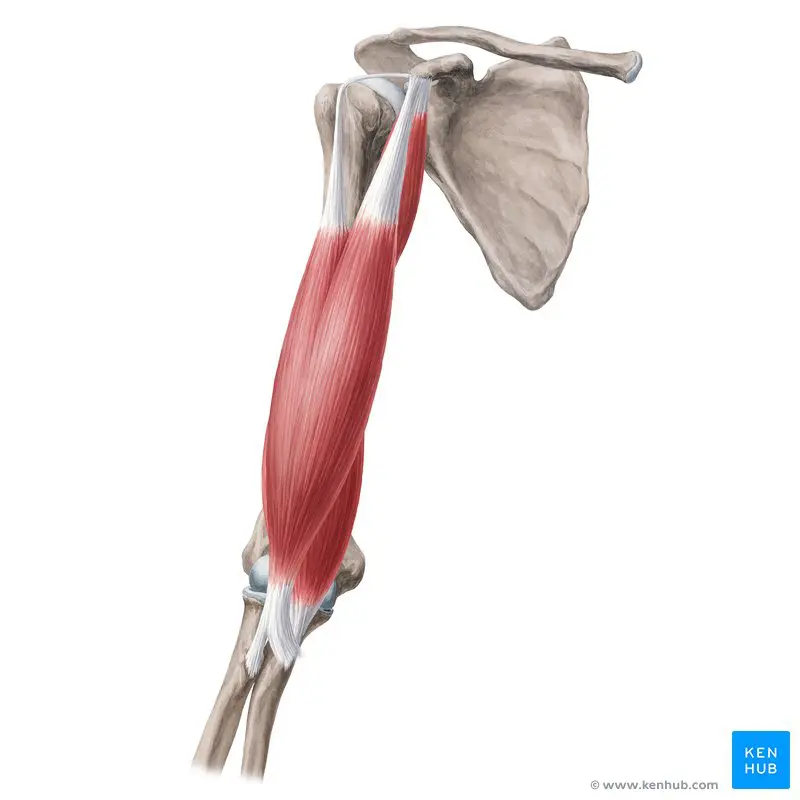
The two heads of the biceps are the short head and the long head. The long head sits lateral to the short head, meaning it’s on the outer side of the arm. It’s confusing because the short head looks longer than the long head.
Both heads of the biceps converge into the biceps tendon with inserts on the radius, the forearm bone that sits thumb-side. This is why the shape of the flexed biceps changes shape when you flex and turn your hand forward, or backward toward your head.
Biceps literally means “two heads” (bi = two, ceps = head, or headed). There’s no such thing as a “bicep”. Left biceps. Right biceps. Saying “bicep” is kind of like saying “scissor”. They’re either scissors or they’re something else.